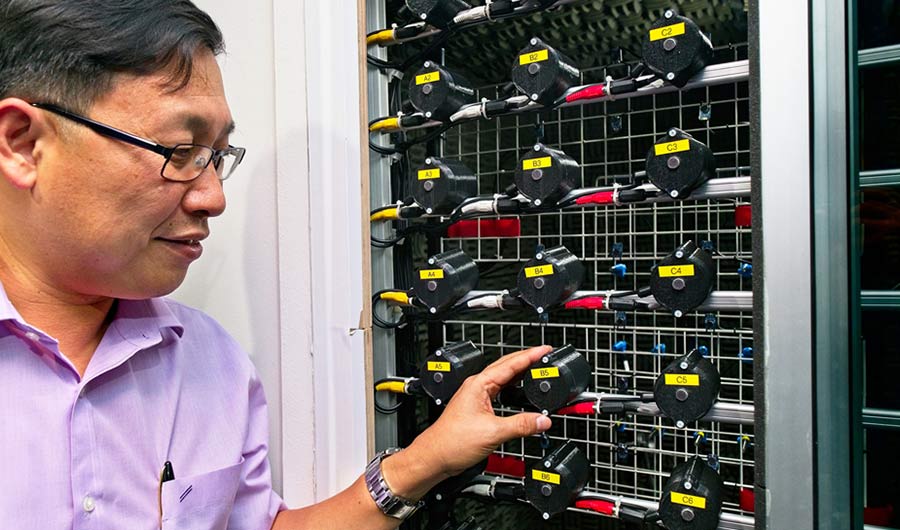Speakers set on bars inside the windows cancel out unwanted noise, using technology similar to that in noise-canceling headphones.
https://www.insidescience.org/news/scientists-invent-noise-canceling-windows
The device is currently optimized for sounds that do not change too much over time. It could work for less predictable noises, such as construction machines, although more complex processing is needed for that.
The researchers did caution their device worked poorly against lower-frequency sounds, such as noise from aircraft or electric transformers. These sounds have larger wavelengths, and combating them would require bigger loudspeakers that would obstruct both the views and airflow through the windows, somewhat defeating the purpose of the device. The active noise control technique is also ineffective for frequencies higher than 1,000 hertz, a range that includes birdsong and human voices.

The new invention consists of 24 loudspeakers, each 4.5 centimeters wide, fixed in a grid pattern to bars attached to the inside of a window, plus a microphone outside the window. If the microphone detects noise from outside the building, the loudspeakers immediately emit "anti-noise" -- sound waves with an inverted pattern of peaks and troughs compared with the incoming noise. This anti-noise cancels out the incoming sounds, reducing the volume of noise pollution entering the room, even when the window is open.
https://www.insidescience.org/news/scientists-invent-noise-canceling-windows
The device is currently optimized for sounds that do not change too much over time. It could work for less predictable noises, such as construction machines, although more complex processing is needed for that.
The researchers did caution their device worked poorly against lower-frequency sounds, such as noise from aircraft or electric transformers. These sounds have larger wavelengths, and combating them would require bigger loudspeakers that would obstruct both the views and airflow through the windows, somewhat defeating the purpose of the device. The active noise control technique is also ineffective for frequencies higher than 1,000 hertz, a range that includes birdsong and human voices.

![[H]ard|Forum](/styles/hardforum/xenforo/logo_dark.png)
